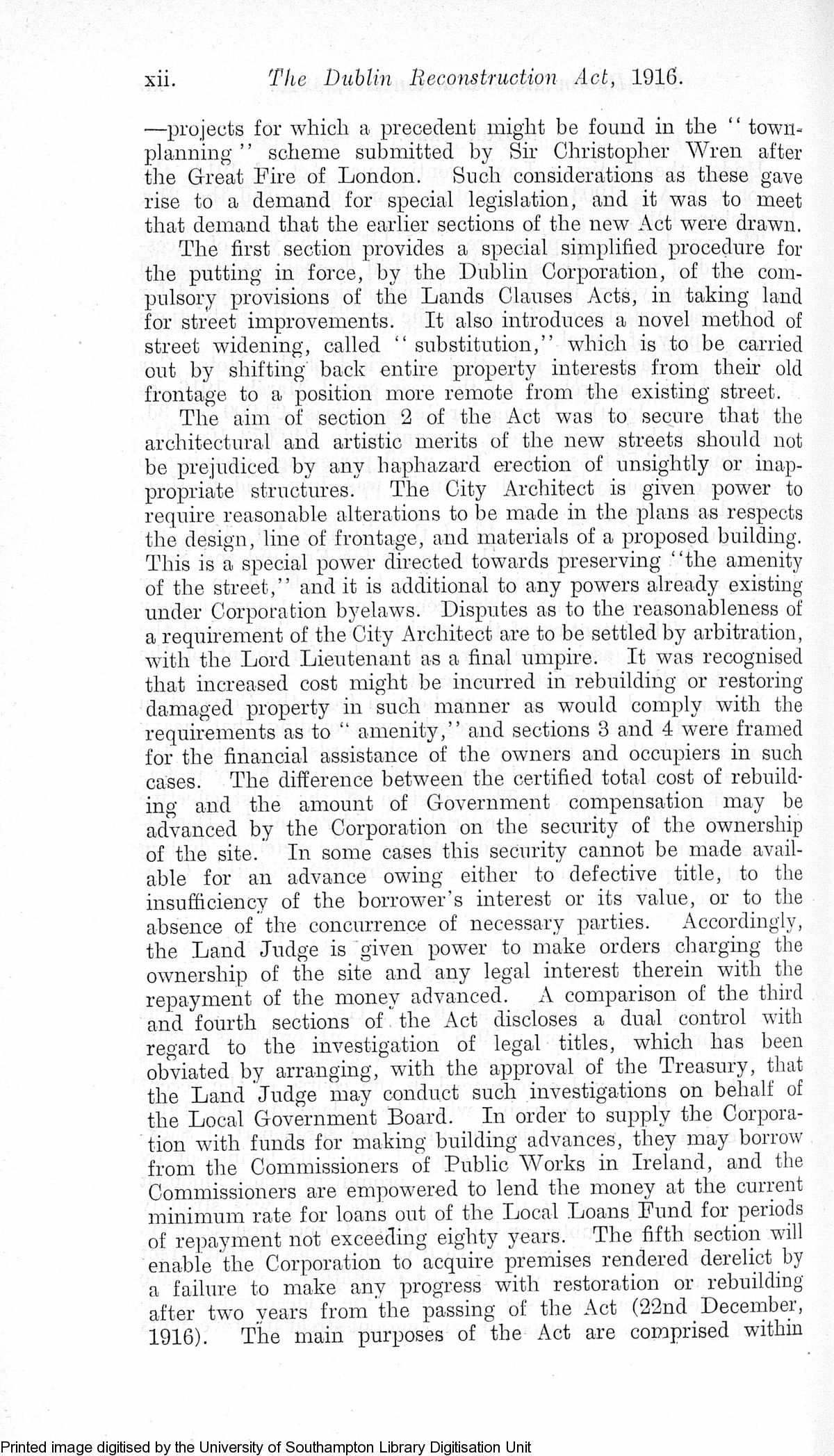.
The Duhli7i Reconstruction Act, 1916. xi.
Motoe Cabs.
Under the Expiring Laws Continuance Act of 1916, the
Motor Car Act, 1903, was continued in force until the 31st
December, 1917.
The number of complaints received during the year of exces¬
sive speed of motor cars showed a marked decrease as compared
with previous years, the decrease being obviously accounted for
by the great curtailment of motor traffic caused by the restrictions
on the supply of petrol.
It is satisfactory to note that the yield of the Motor Car
Licence Duties in Ireland for the year ended March, 1916, as
notified to us by the Postmaster-G-eneral, was £3,909 5s. 3d.
in excess of the previous year, amounting to £40,673 10s. 9d.,
as against £36,764 6s. 6d. The usual percentage accruing to
County and County Borough Councils was duly paid to their
credit during the year.
In pursuance of Section 13 of the Finance Act, 1916, we
made regulations, similar to those made for England and Scot¬
land, providing for a distinctive sign to be affixed to motor
.cars exempted from motor car licence duty as being hackney
carriages. The intention of the provision in the Act and of the
regulations is to assist the more effectual enforcement of the
payment of the motor car licence duty.
We have had before us an ai^plication from the Corporation
of Dublin for the issue of a regulation providing that heavy
motor-cars shall be fitted with splash-guards to obviate the
damage and nuisance caused by mud-splashes from heavy motor¬
car traffic in the city. The question of the most effective
apparatus for the purpose is under the consideration of a Depart¬
mental Committee in England, and we have deferred dealing
with the application until the recommendations of this Com¬
mittee are available.
The Dublin Eeconsteuction (Embbgbncy Provisions)
Act, 1916.
A special Act of Parliament (6 & 7 Geo. 5, Ch. 66) was
passed during the Session of 1916, to deal with problems arising
in Dublin out of " the reconstruction of areas, streets, houses
or buildings destroyed or damaged in the course of the recent
disturbances "—i.e., the rising which took place in April, 1916.
The damaged area of the city included a large part of Sack-
vilie Street, which had always enjoyed, since its laying-out by
the Wide Streets Commissioners, a prominent place amongst
modern thoroughfares of the spacious type. It was strongly
felt both by the public and the Dublin Corporation that no
buildings should be allowed to rise from the ashes of that street
which would be unworthy of its past reputation. At the same
time, projects were discussed for making the widespread demoli¬
tion of buildings an occasion for carrying out street improvement

